The Beginnings 1970 - 1979
THE ACCESSION OF HM SULTAN QABOOS JULY 1970
“On 30 July Sultan Qaboos arrived at Bait al Falaj...after inspecting a Guard of Honour drawn from almost every unit, Qaboos was seated on a throne – a large chair mounted on a dais – in front of a crowd of dignitaries...Sayyid Shihab made a speech...Qaboos replied. I believe that all who heard it will remember for ever the sound of his voice speaking in classical Arabic and clearly winning the hearts of his subjects......It was an exhilarating and unforgettable privilege to be in Oman during those momentous days and with my comrades in arms to have made a contribution to the happiness, security and dawning prosperity of that majestic and deserving country.”
Brigadier John Graham, Commander of the Sultan’s Armed Forces 1970 – 72.
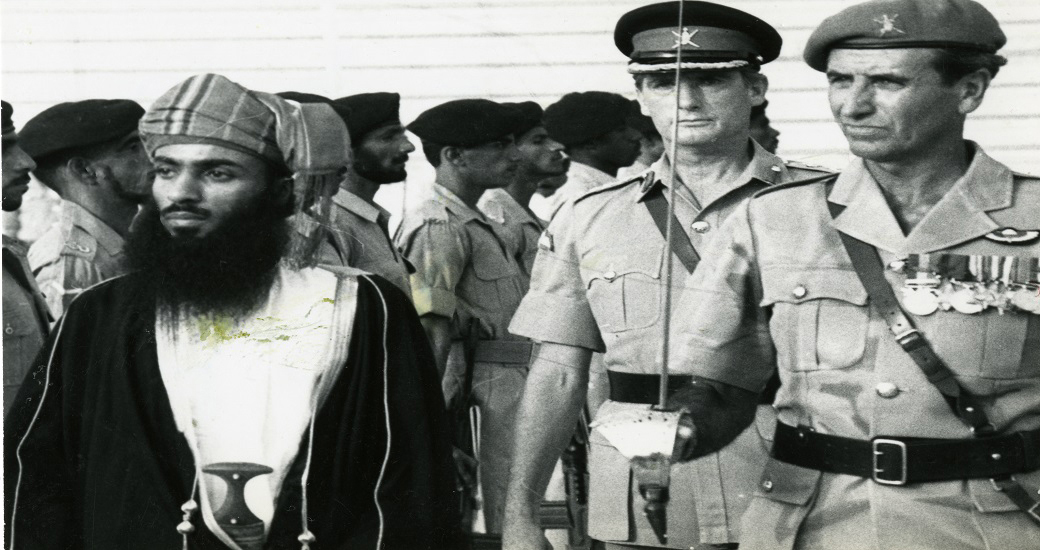
HM Sultan Qaboos escorted by Brigadier Graham (centre) on arrival at Bait al Falaj, 30 July 1970
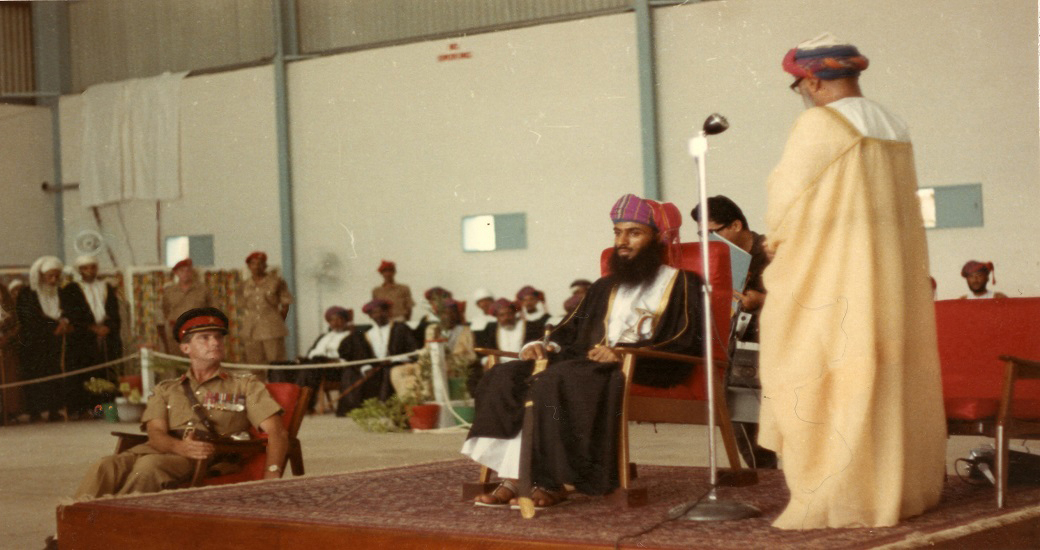
HH Sayyid Shihab bin Faisal’s speech of greeting to HM Sultan Qaboos on his accession
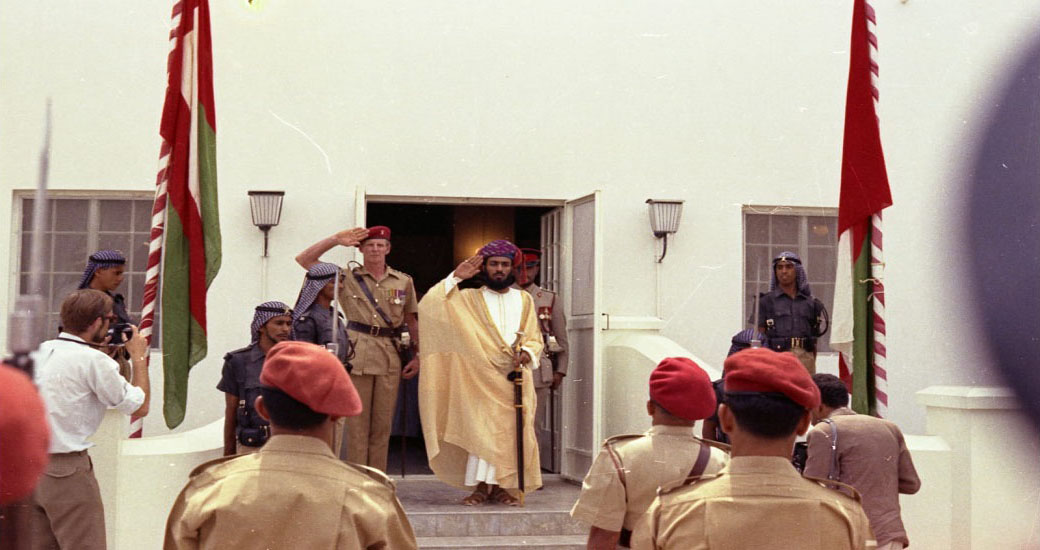
HM Sultan Qaboos takes the salute in Muscat: a rare picture captured by the poet and journalist Dhiab bin Sakher Al Ameri
FIRST BRITISH AMBASSADOR PRESENTS CREDENTIALS JULY 1971
“They wanted me in Muscat in April 1971 pretty quickly and, at the time, Sultan Qaboos, who though not exactly under house arrest in his father’s time had been restricted in his movements, was taking a prolonged holiday. As speed was apparently of the essence, I went to Oman as Consul General as the predecessors had been. As soon as the Sultan himself came back in August, however, the Omanis asked me to leave the country and return so that they could receive me properly as the first Ambassador to the Sultanate of Oman. So I went to Bahrain and Dubai for a day or two and, when I came back I was received in Muscat with the due ceremonial of those times as the new Ambassador. I was the very first Ambassador Oman had had since the Great Moghul sent an Embassy in the 1780s. Thus I also became at the same moment the first Dean of the Diplomatic Corps”.
Sir Donald Hawley (interviewed by Malcolm McBain, August 2007)
At the same time the British community began to grow as British companies increased their contribution to the growth of the economy and jointly with Omani companies established the British School Muscat in 1971.
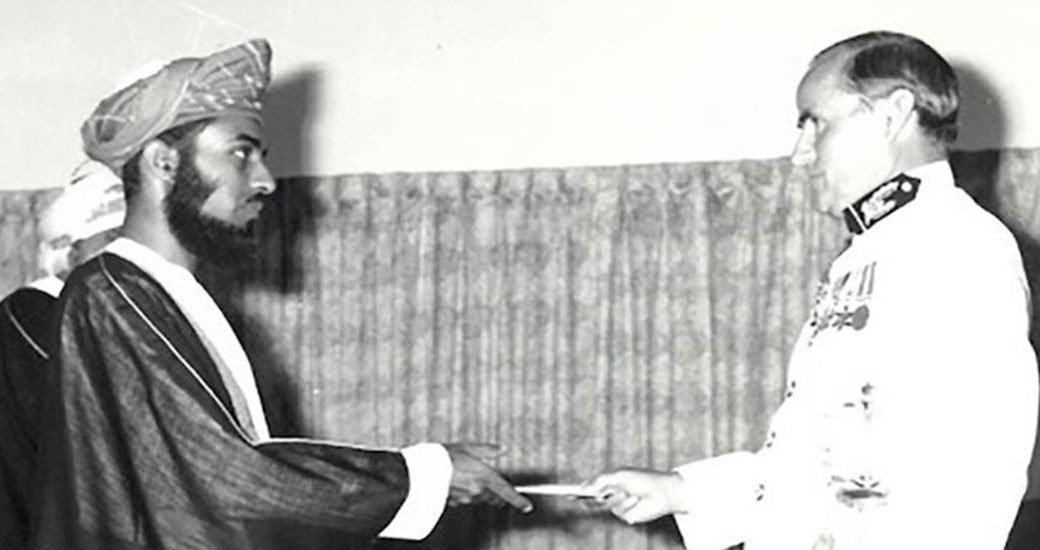
Sir Donald Hawley presents credentials to HM Sultan Qaboos, 23 July 1971
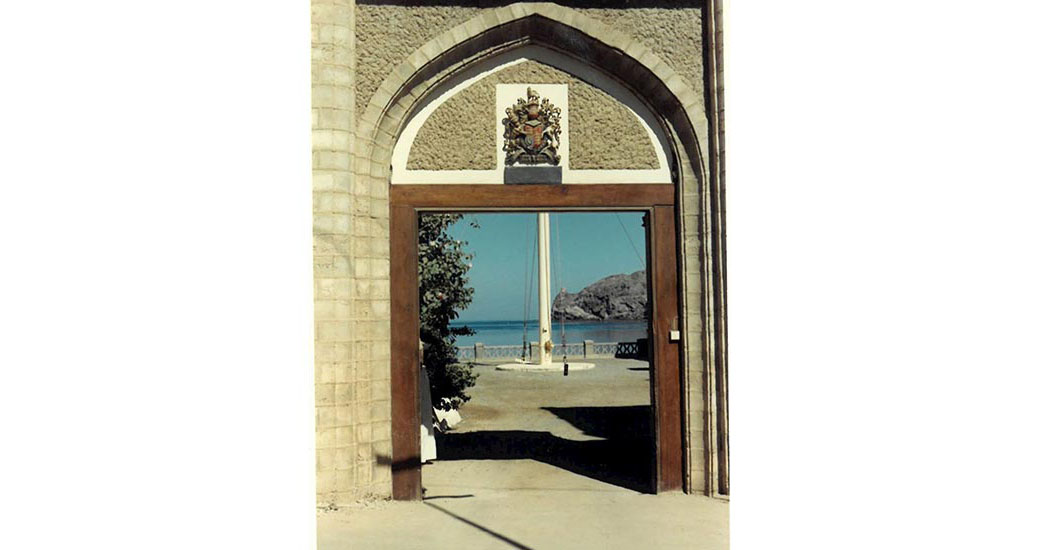
Entrance to the British Embassy, Muscat, 1971
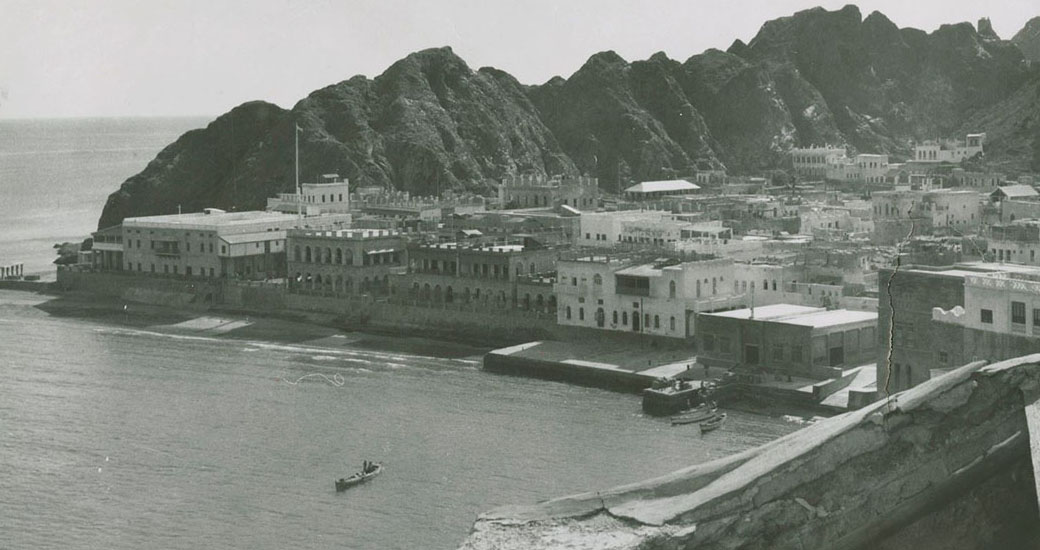
The British Embassy next to the Old Palace, Muscat 1970
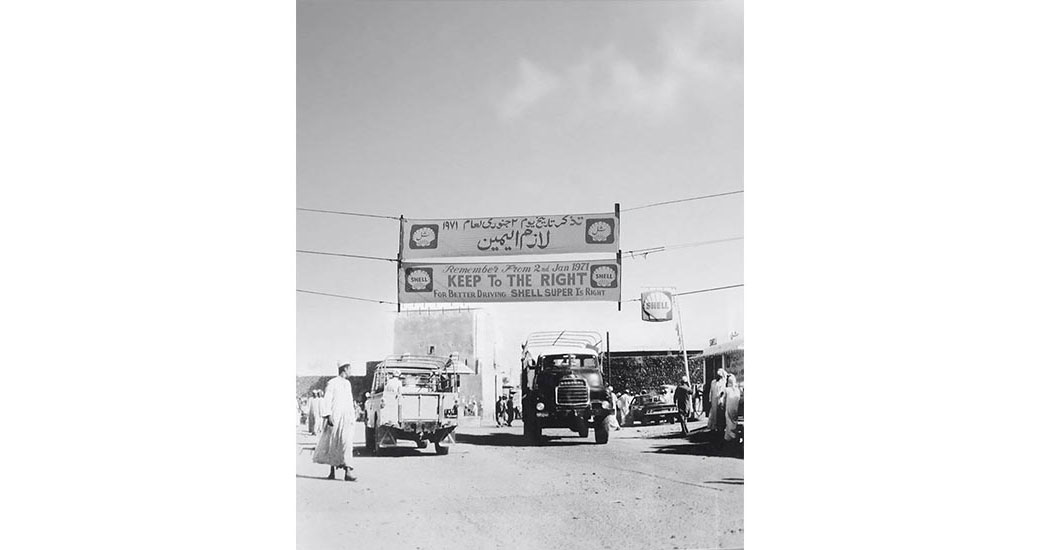
British Companies were active in the Renaissance from the outset
Shell Muttrah filling station, Land Rover and Bedford truck (driving on the left)
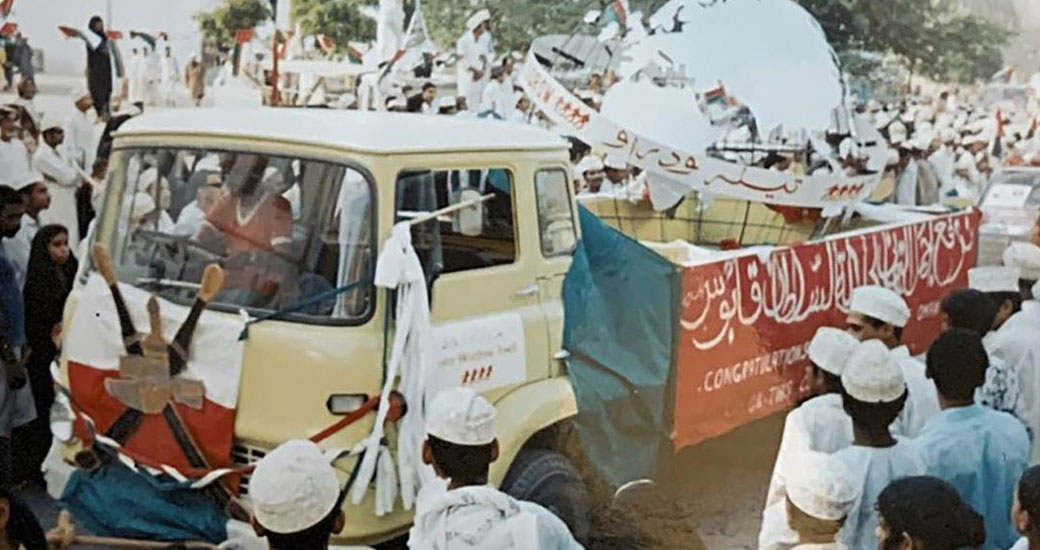
First National Day: the Taylor Woodrow Towell float
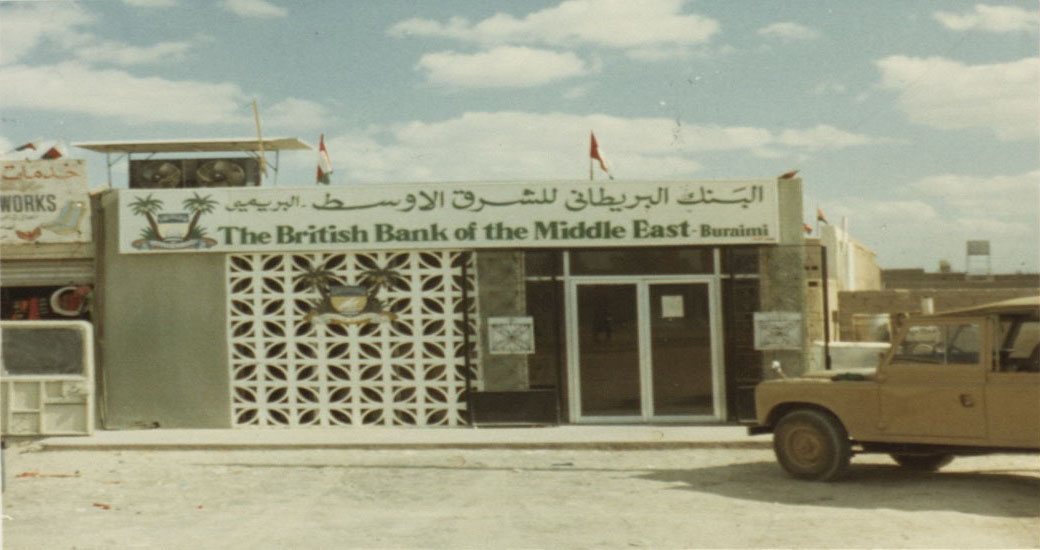
The British Bank of the Middle East, Buraimi, 1978
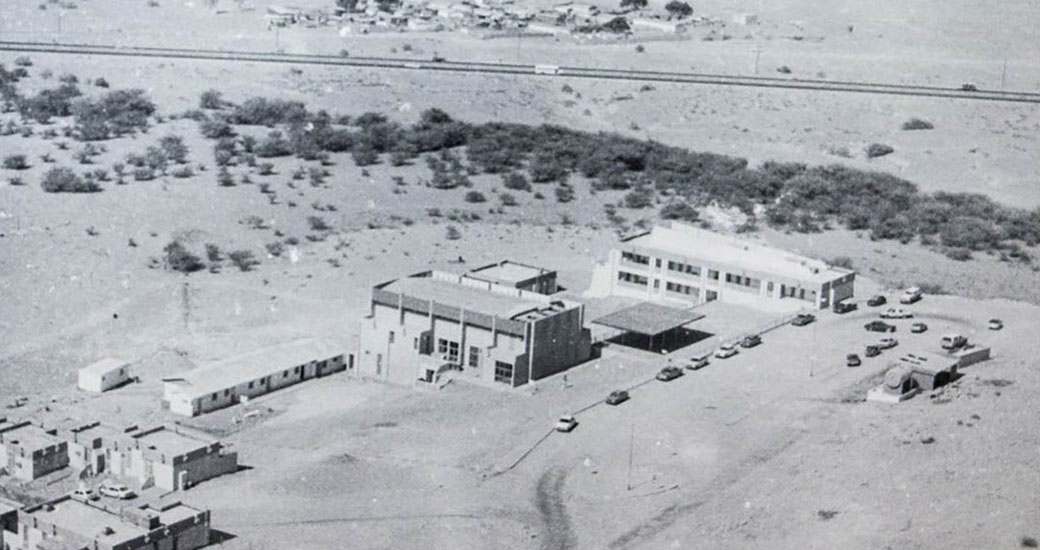
The British School Muscat’s new building 1978
DHOFAR WAR 1970 – 75
In 1970 the chief challenge to Oman’s future still lay in Dhofar where since 1964 a small group of British officers, advisors, and trainers had been helping guide the Sultan’s forces in their conflict with the Marxist insurgents of the People's Front for the Liberation of the Occupied Arabian Gulf (PFLOAG).
Although the Sultan immediately offered an amnesty to all those who opposed the previous regime and a serious hearts and minds campaign was waged alongside the war, the initial effect on the war was minimal. Indeed, for some two years the rebel activities, strongly supported from PDRY (South Yemen) and other countries grew in intensity. Salalah itself was in some danger.
Between 1972 and 1975 the military balance began to shift increasingly in the Sultan’s favour. This was achieved by expanding the land forces, acquiring helicopters and transport aircraft and strengthening the navy.
The tide was turned when the battle of Mirbat was won in July 1972. PFLOAG attacked the British Army Training Team (BATT) house, which housed nine SAS soldiers, a strategic point just outside the Port of Mirbat and close to the historic fort. PFLOAG lost 38 dead and never recovered from the defeat.
For some time after the victory at Mirbat the Sultan’s forces were still unable to dominate the whole of the vast and wild mountain area of Dhofar, even though with Operation Simba beginning in April 1972 the country’s outer defences were extended to Sarfait on the Oman-South Yemen border.
The difficulty was overcome by further expansion of Omani forces; by the welcome arrival of Iranian troops to serve under command; by help from Jordan; and by extension of the continuing help already being provided by British loan service, contract, Army, Navy and Air Force officers, British Army training teams and some defensive operational units. With growing signs of civil development and concern for people’s welfare more and more former rebels came over to the Government’s side.
As a result of military and civil measures the Dhofar campaign came to a successful end and on December 11th 1975 the Sultan announced that the war was ended.
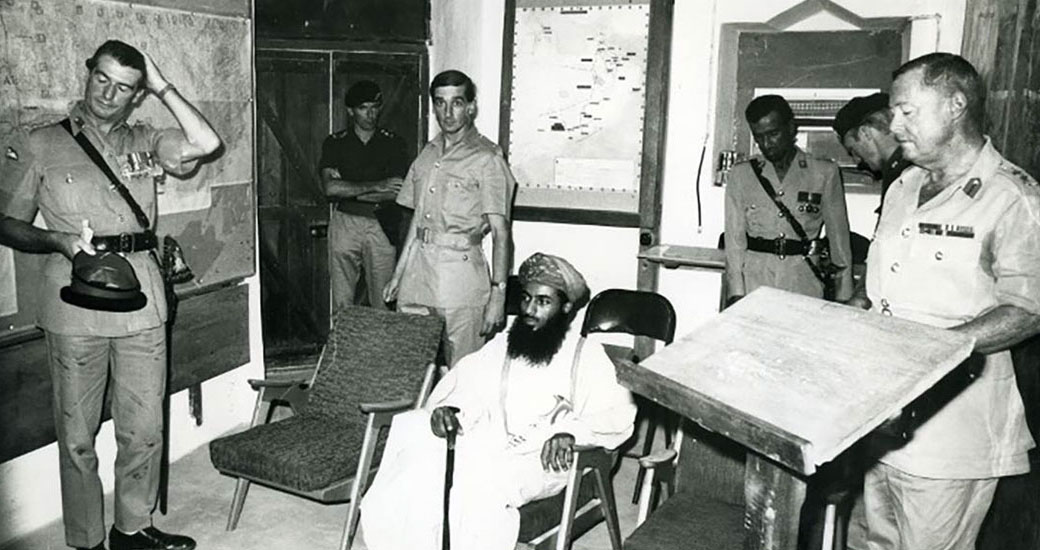
In the Ops room 1970: Brigadier John Graham, Tony Molesworth, HM Sultan Qaboos, Lieutenant Said Salem Al Wahaibi, Colonel Colin Maxell
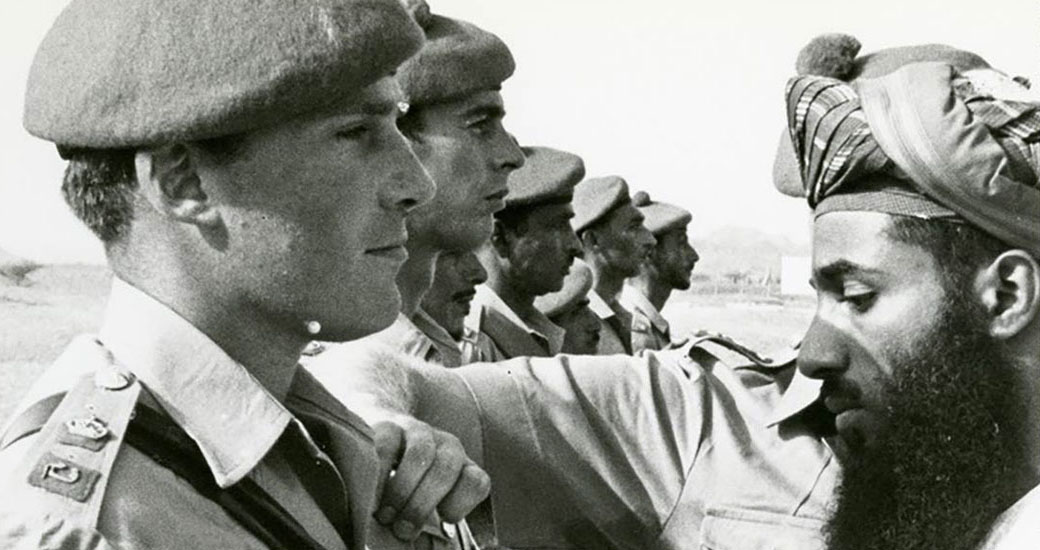
HM Sultan Qaboos decorating Maj David Scholfield; next in line Maj Roger Brown
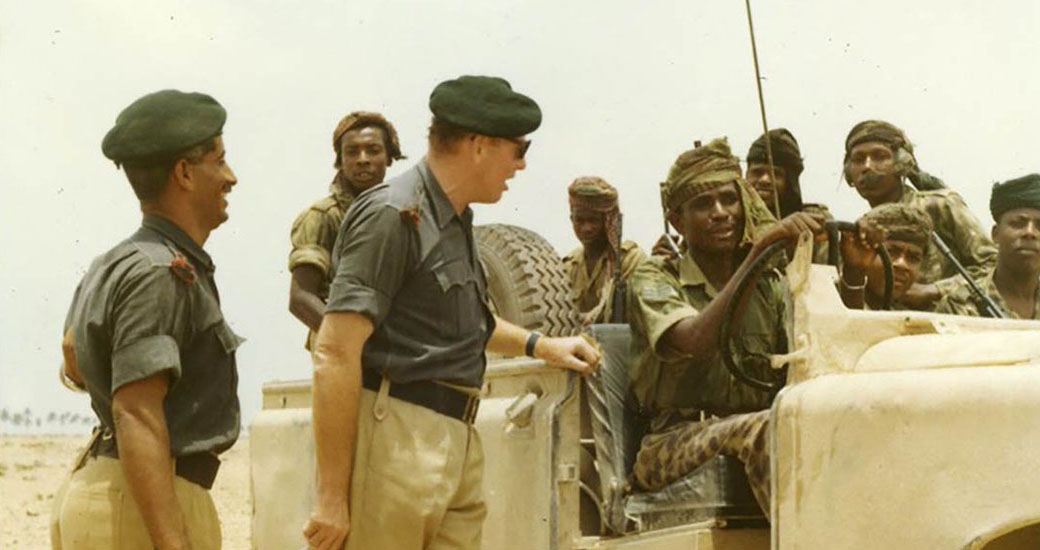
Chris Phillips and members of Baluch regiment, 1971
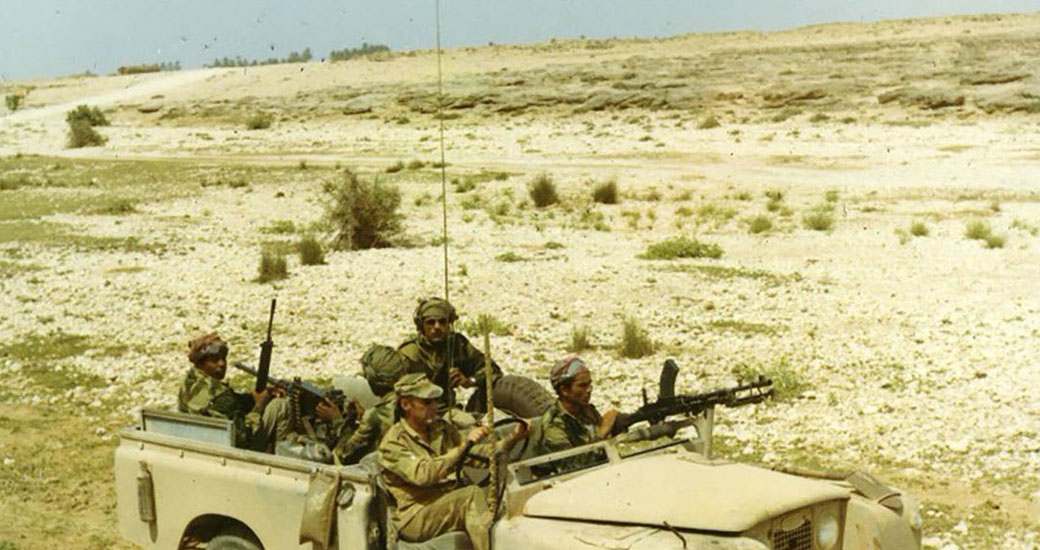
Z Company: Spike Powell and crew
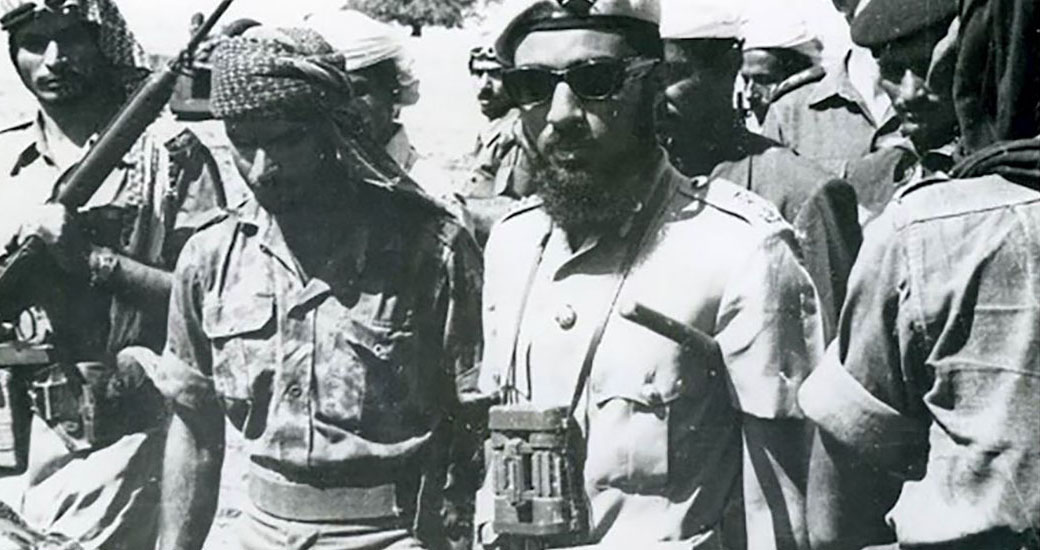
HM Sultan Qaboos visits Operation Jaguar, October 1971
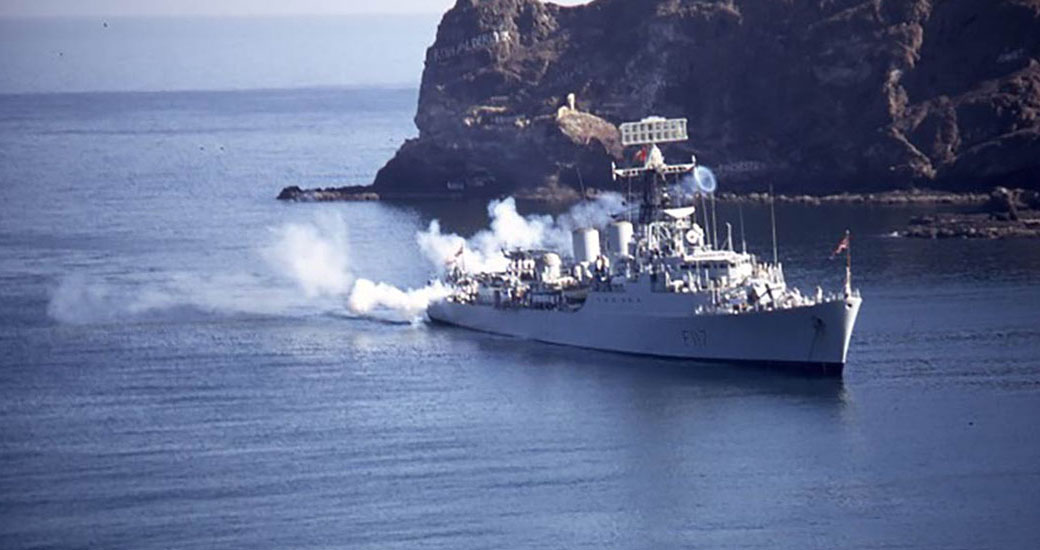
HMS Tartar visits Muscat, 1972

'Action at Mirbat' by David Shepherd
SAS soldiers hold the line from the gun pit at Mirbat fort against waves of attacking PFLOAG
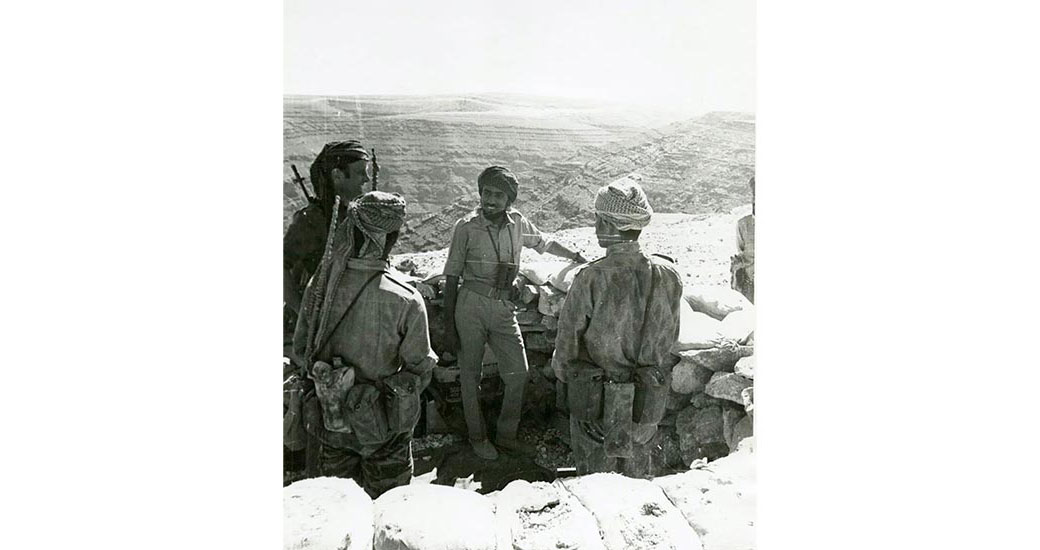
HM Sultan Qaboos visits Operation Simba, December 1972
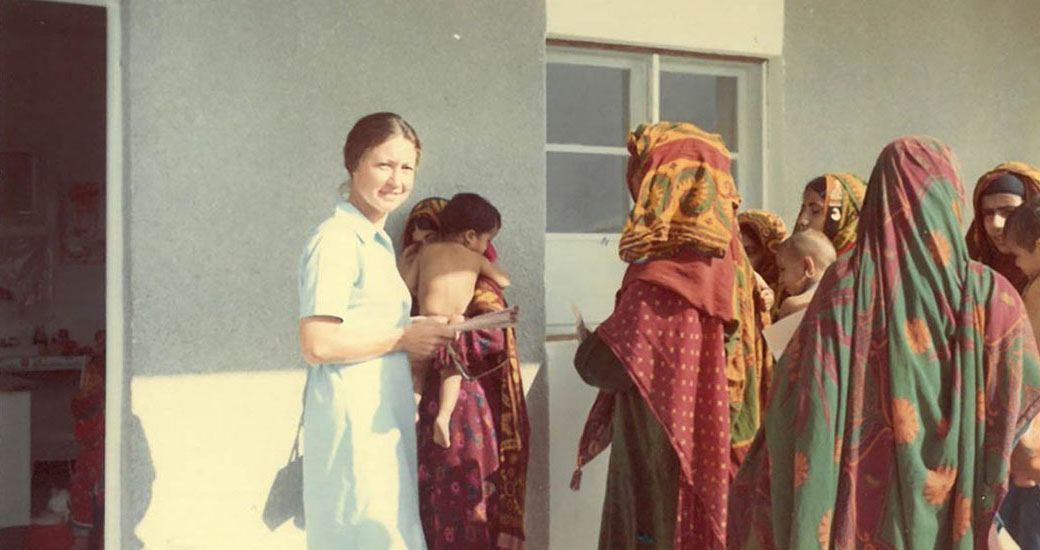
Nurse Margaret Jones at the SCF Clinic Nizwa, March 1973
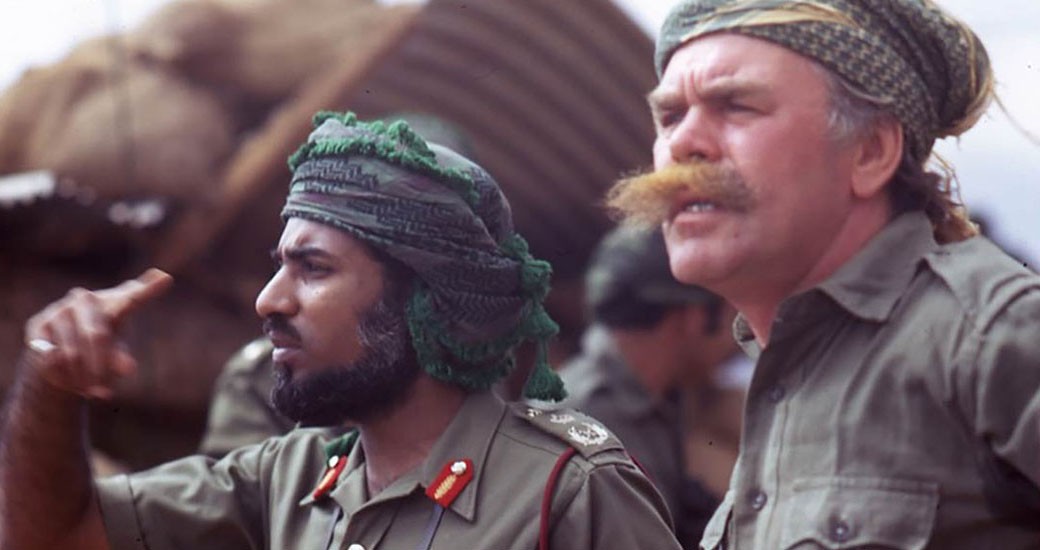
HM Sultan Qaboos with Major Geoffrey Williams. Oman Gendarmerie and Royal Guard position Midway Road, 1975
HM SULTAN QABOOS MAKES HIS FIRST OFFICIAL VISIT TO LONDON, 1973
“After initial courtesies, Sir Alec Douglas-Home asked the Sultan how things were going in Oman. He understood that on the military side there had been considerable success since last year. The Sultan said that the situation was much better, but that there was still a lot to do. The monsoon was usually an active time for the rebels since it provided all the cover they required and enabled them to come down from the hills in impunity. This year, however, the monsoon had passed relatively undisturbed especially in the Eastern sector, and his Armed Forces had managed to stay on the jebel for the first time. A programme of drilling for water in secure areas had also been instituted and drilling equipment had been obtained from the United States. The situation was, however, not so good in the Western area near the borders with PDRY”.
Foreign Office Record, September 1973
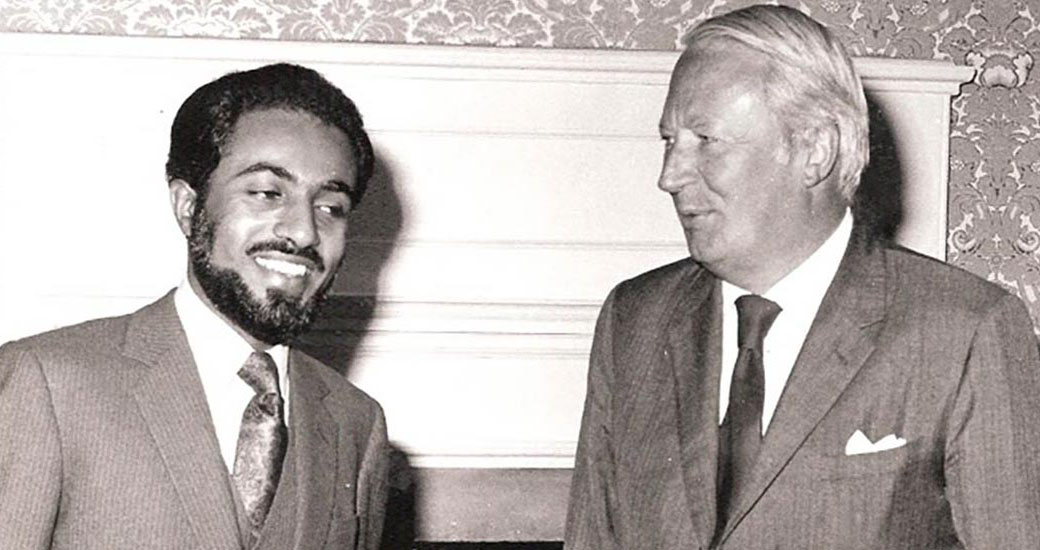
HM Sultan Qaboos with Prime Minister Edward Heath at No. 10 Downing Street, September 1973
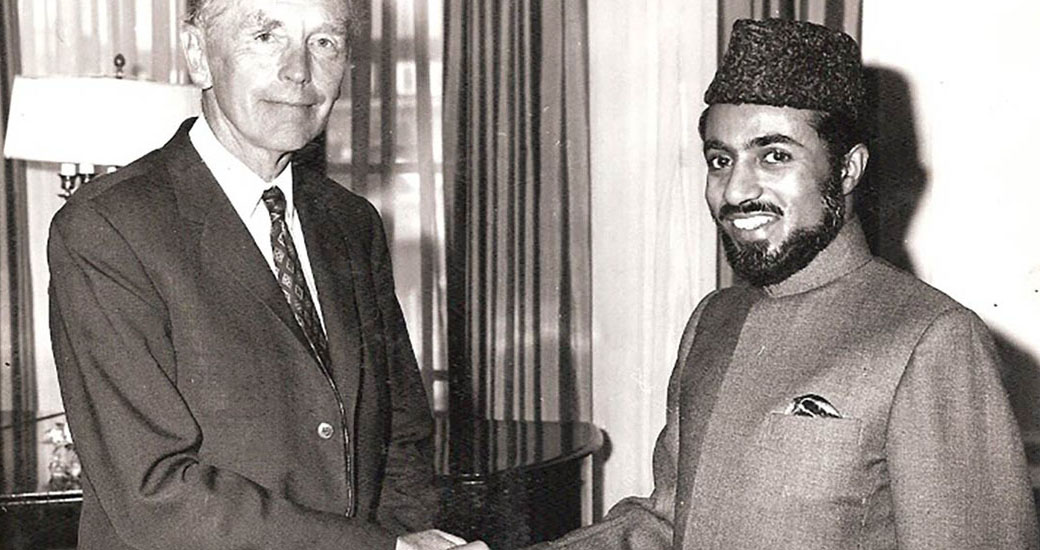
Private talks with Foreign Secretary Alec Douglas-Home at Claridges, September 1973
FIRST STATE VISIT OF HM QUEEN ELIZABETH II
In February 1979, HM The Queen and HRH The Duke of Edinburgh were hosted by HM Sultan Qaboos in Muscat during their six-nation Tour of the Gulf States on board the Royal Yacht HMY Britannia. Events included an Official Welcome, a Tour of the Souk of Nizwa, a Picnic, and a State Dinner hosted by the Sultan in honour of the Queen, which was reciprocated by a Return Dinner hosted by the Queen on board the Royal Yacht.
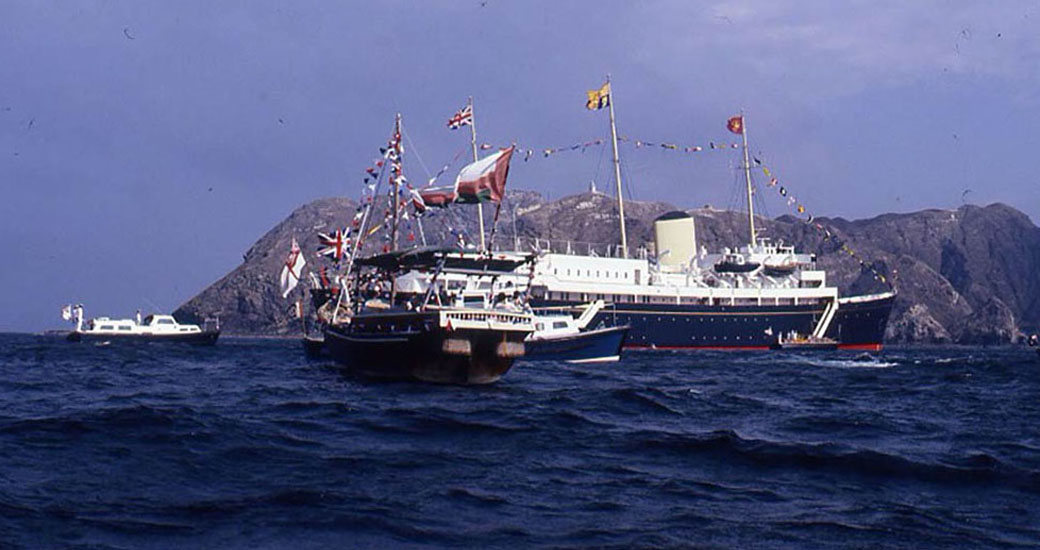
HMY Britannia in Muscat Bay for the State Visit, February 1979
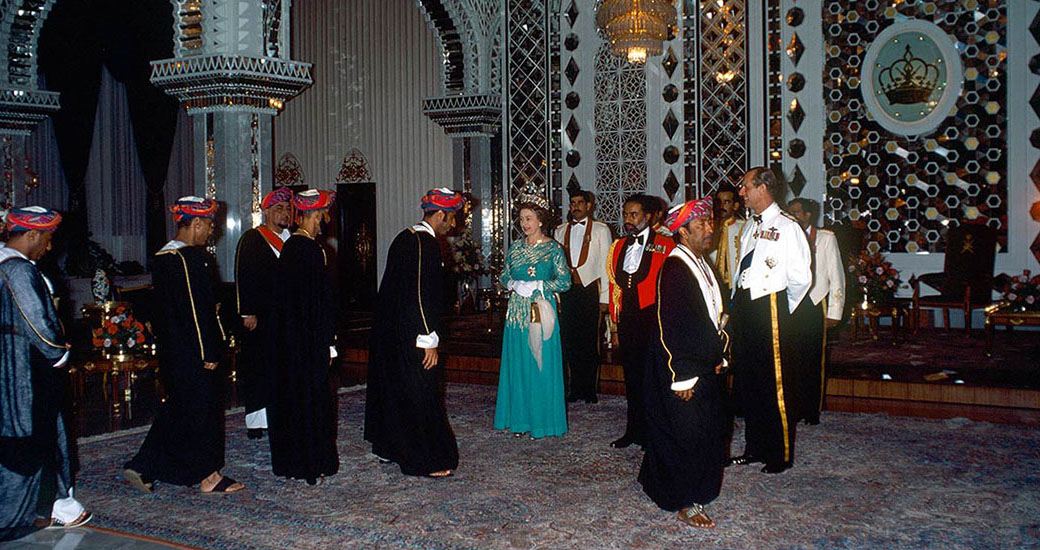
HM Sultan Qaboos hosts State Dinner for HM The Queen and HRH The Duke of Edinburgh at the Al Alam Palace, February 1979
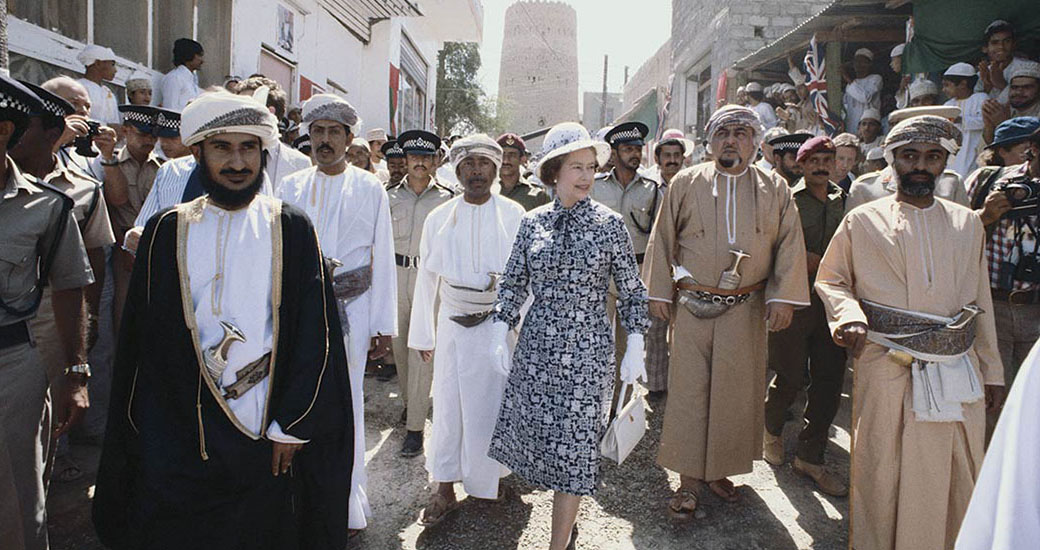
HM The Queen tours Nizwa Souk
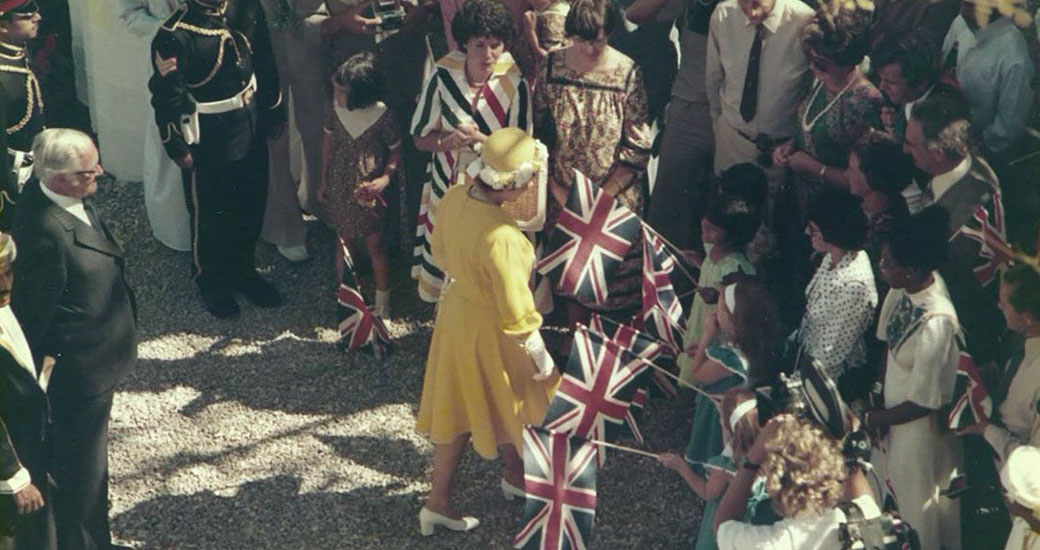
HM The Queen at the British Embassy
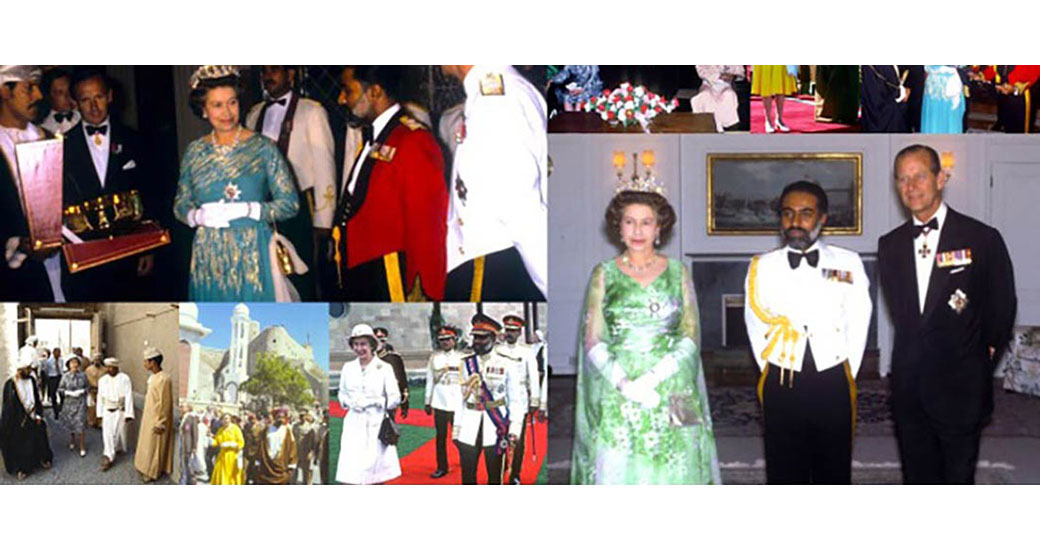
Scenes of the State visit February 1979